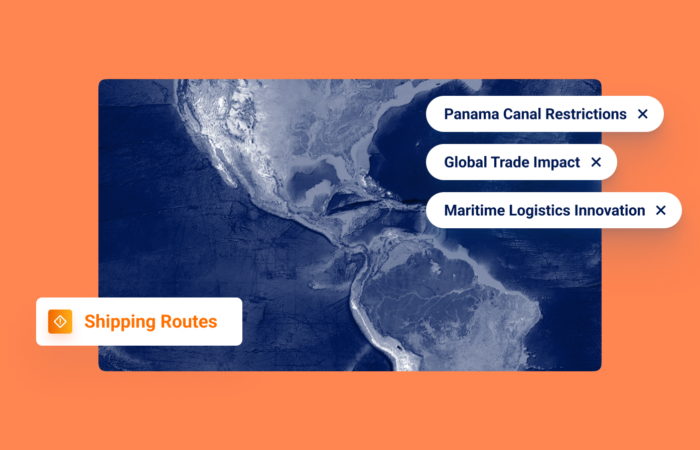Delays will happen. AI can help you understand why…

What’s inside?
Delays are occasionally welcomed. Who doesn’t like a delayed deadline? Who would be angry at a delayed flight back from the Bahamas?
For freight forwarders, importers and exporters, beneficial cargo owners (BCOs), and others in the supply chain ecosystem, delays are damaging and unfortunately prevalent. Over 40% of shipments are delayed. Considering this reality, you would think it would be easy to quickly understand why containers are delayed and when they will actually arrive, but this remains a huge challenge.
This uncertainty can prevent planning optimization, damage your customer relationships, and lead to very unpleasant phone calls or hallway discussions. To help prevent these outcomes and increase value to our customers and partners, we are excited to announce the newest enhancement of our ETA Insights, with the launch of a first-of-its-kind Reasons for Delay!
Save time and money…
Reasons for Delay insights add yet more value to Windward’s Ocean Freight Visibility, which already offers the most accurate ETA predictions with its Maritime AI™ Predicted ETAs, calculated by fusing a multitude of relevant datasets and running them through machine learning models. Now, Windward Ocean Freight Visibility users can finally access unbiased information and answer the unavoidable follow-up question to any delay update – “Why?”. These exclusive insights will be available via an easy-to-integrate API, our web application, and will also appear on our daily status update emails.
Windward is already committed to saving all involved in tracking containers and the many hours spent on manual checks, by automating real-time visibility into container and vessel journeys. This will be further expanded by also eliminating the need to chase carriers, terminal operators, and others to try and piece together the chain of events that led to the delay.

First Reason for Delay – transshipment delay
This refers to delays that are caused during a maritime transshipment, meaning the transfer of a container from a mother vessel onto another vessel, often a feeder, that either brings it to the next transshipment stop or to the port of discharge (POD). According to Windward’s research, 25% of delayed shipments are caused by a complication during the maritime transshipment. Based on the data mentioned earlier in this post, this would mean that 1 in every 10 vessels is affected by this.
Second Reason for Delay – rollover
The container failed to be loaded onto the vessel that was scheduled to transport it out of the transshipment port (TSP) or port of loading (POL). Possible events leading to such a delay include:
- Carriers overbooking space on the vessel scheduled to transport a container, leading to the inability to load it onto that vessel due to lack of space or excess weight.
- Unplanned rerouting of the allocated vessel.
- Technical issues which make the planned vessel unfit for sailing.
- Delivery of the container to the POL after the cut-off date.
According to Windward’s research, rollovers account for 19% of all delays.
Third Reason for Delay – late departure
Seemingly the most obvious reason of them all, right? A container is late because it was late to leave the POL. Interestingly, Windward’s research shows that only 8% of delays are caused by the vessel’s inability to leave the POL at the time it was scheduled. It should be noted that the late departure in this case does not include those happening at a transshipment port, as that would be considered a transshipment delay.
Supply chain professionals can finally leverage these unique insights and utilize this actionable visibility to make better-informed decisions based on facts, such as assessing the performances of carriers, terminals, and ports, and providing accurate updates for stakeholders in real time.
“Visibility is critical to the supply chain. Knowing your shipment is delayed is a necessity, but knowing why your shipment was delayed further empowers customers to take action, save costs, and minimize the business impact of delays,” said Ami Daniel, CEO and Co-Founder of Windward. “Windward’s new AI-based iteration of visibility is actionable, and Reasons for Delay is our next step to provide stakeholders with the tools to increase efficiency and decrease costs when it comes to their shipping operations.







